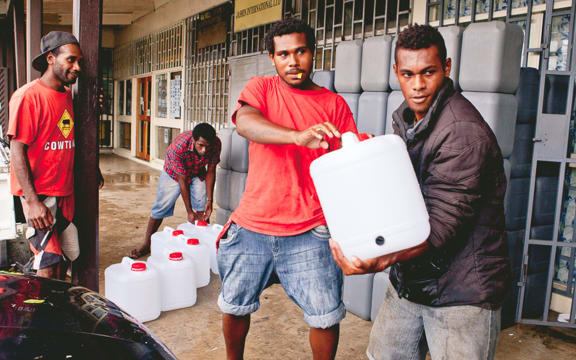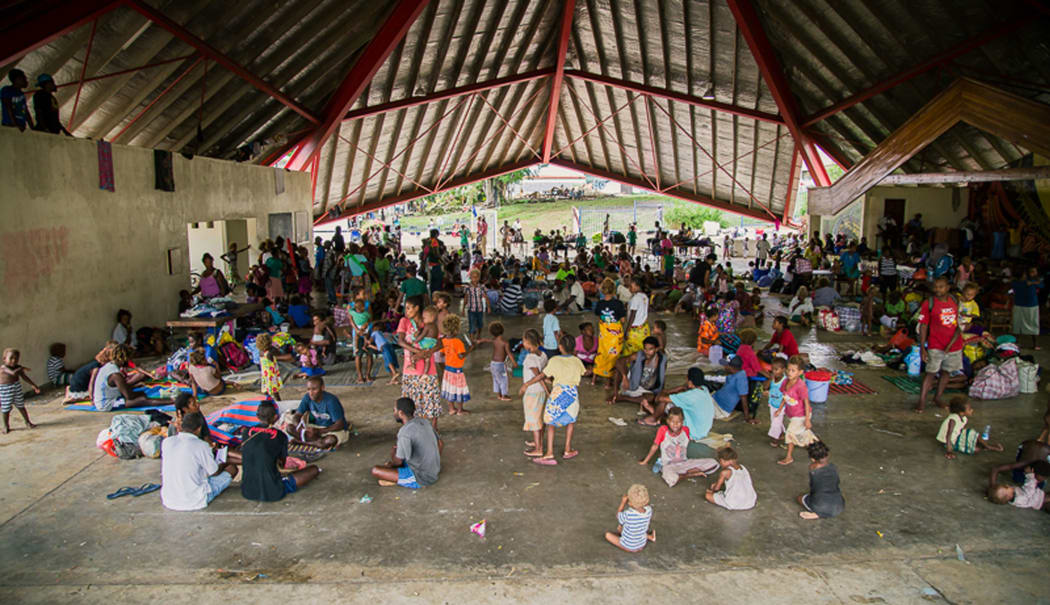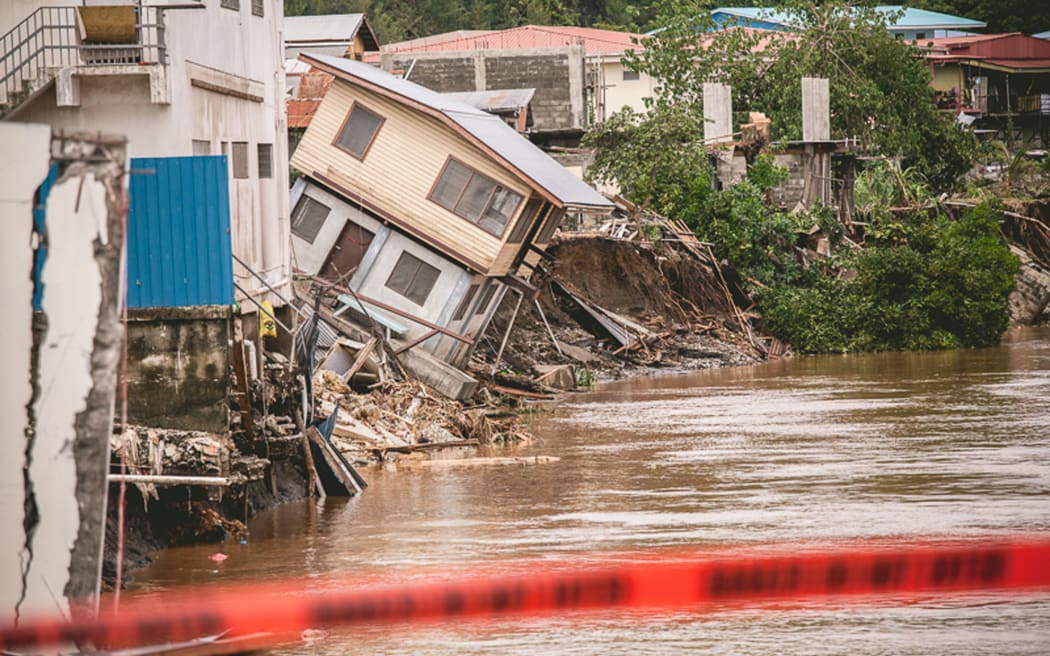The international airport in Solomon Islands has re-opened allowing planes carrying relief supplies to reach the flood-ravaged capital, Honiara.
The floods have severely damaged the city's infrastructure and left 21 people dead and dozens missing.
Flash flooding, strong winds and landslides destroyed at least 76 houses and damaged 13 bridges and other infrastructure.
The Mataniko River, which runs through the capital Honiara, burst its banks, pulling houses into the floodwaters, bringing down a bridge and inundating the downtown area.

Local World Vision staff preparing aid items for distribution. Photo: AFP / World Vision / Rachel Skeates
At least 12,000 people are in evacuation centres in urgent need of clean water, food and medical supplies.
Honiara's international airport was closed after flash floods left the runway covered with debris but it has now been cleared for emergency and aid flights.
Foreign Affairs Minister Murray McCully says a Royal New Zealand Air Force Hercules will leave on Monday morning for Honiara. He says it will take supplies asked for by the Solomon Islands government on Sunday night.
"One of the primary reasons for delaying until tomorrow morning is because we can get a better fix in the meantime as to what precisely we can do to help and make sure that we've got the priority equipment provided for."
Mr McCully says a helicopter will be used to transport some of the supplies around the islands.

Searchers looking for survivors or bodies in debris left by the flood. Photo: Solomon Islands National Disaster Management Office
Disease in evacuation centres
Save the Children says disease is spreading through the evacuation centres set up after the severe flooding.
Save the Children emergencies manager in Honiara, Graham Kenna, says people are suffering from diarrhoea and eye infections in the centres.
He says about 50 families are sheltering in one school with one or two toilets and the hygiene conditions are appalling.
Mr Kenna says people need to be given tents and basic household goods so they can move out of the centres.
The disaster has raised fears that a lack of sanitation and fresh water will lead to an outbreak of dengue fever on the Pacific island.

People sheltering at an evacuation centre in Honiara. Photo: AFP / World Vision / Rachel Skeates
Mr Kenna says up to 49,000 people were homeless and thousands are staying in schools and other cramped conditions with poor sanitation and are relying on rainwater for drinking. "We expect an outbreak of dengue fever in two weeks," he says.
UNICEF says water, sanitation and food are going to be the most important things to get to those affected by flooding.
The National Disaster Council says food, water, clothing and toiletries are urgently needed.
UNICEF New Zealand executive director Dennis McKinlay says it is critical to get those items to people in the next two days.
New Zealand Red Cross programme manager Peter Winthrop told Radio New Zealand's Sunday Morning programme the scale of the disaster for Honiara is huge.
"There were houses floating down the (Mataniko) river and people on them. One of my colleagues mentioned that they saw a mother and a baby just floating by. I think there's something like fifty to sixty houses that have gone down."
Mr Winthrop says all the rivers are flooded and the shore of the Mataniko is littered with debris and washed-up boats.

Houses partially washed away on the Mataniko River. Photo: AFP / World Vision / Rachel Skeates

